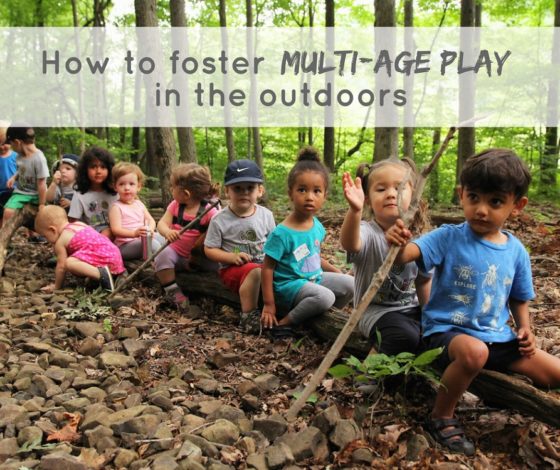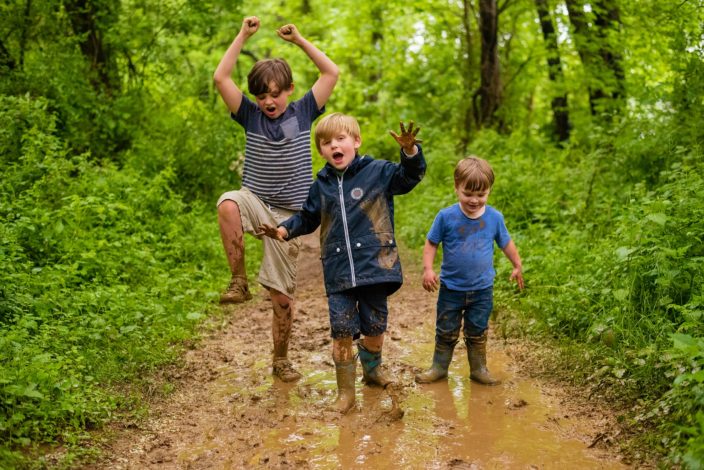7 Tips for Safety on Trail With Kids
We adventure with our kids to make memories, but many fear about safety on the trail. The good news is, families can minimize many risks by following some simple guidelines when hiking with kids. What are they? Here are seven tips for safety on trail with kids.
1. Share your plans with others
Always tell someone where you're going and when you plan to be back. Leave a copy of the trail map and mark your route with a highlighter so others will know where you're headed. Once you're at the trail head, be sure to sign in at the trail register if there is one.
2. Bring more food and water than you need
Pack more food and water than you think you'll need on your hike. Water is key, and how much you need varies with terrain, temperature and age. A general guideline to follow is 4 cups (1 liter) of water per adult for every hour of hiking; and children need 1-2 cups for every hour of hiking. You may also want to carry a Lifestraw or water filter as a backup. Encourage children to stay hydrated by letting them carry a pack with a bladder inside. Or make sure to stop for family water breaks at certain intervals, or even add a little something flavorful to their water. Energy bars are a great way to carry extra food without a lot of bulk. Look for bars specifically made for kids.
Photo credit: Deanna Curry
3. Be prepared for big changes in weather
If you’re hiking in the mountains, make sure every person in the group has at least one extra layer (like a fleece jacket) and a stocking cap. If rain is even a remote possibility, bring rain gear - a backup rain poncho can do the trick and it is light and small to carry. For young children, packing an entire set of extra clothing or several extra pairs of socks can be a lifesaver. If you're carrying your child, dress them warmer than if they were walking. Some families carry hand warmers, mittens or extra layers of long underwear as well.
4. Bring a first aid kit and know how to use it
You can purchase kits from companies like Adventure Medical Kits, which provide supplies you'll need for a safe hike, or you can assemble your own at home. A few essentials that should be in every kit are Easy Access Bandages, antibacterial ointment, wound-closing tape, gauze, tweezers, an ace bandage, moleskin for blisters, ibuprofen and an antihistamine (be sure to pack these in both adult and children dosages). You should know how to use every item in your kit before you go hiking with it, so be sure to read up on some basic first aid skills, such as how to stop bleeding, how to wrap a sprain and how to remove splinters. Kids can even assemble a small kit for their own packs.
Photo credit: Kristin Hinnant
5. Equip your children for safety, too
Give each child their own small pack to carry. It can be a small backpack or a fanny pack, and it should have, at a minimum, an emergency whistle, a jacket or extra layer of some kind, a few snacks and water. If a child gets separated from you, they'll have at some survival gear with them.
6. Stay together
Teach your kids to keep you in sight at all times, to stop at all trail junctions to wait for the rest of the group, and to stay on the trail. Also, dress everyone in bright colors (no camouflage on hiking day!) to make it easier to see one another.
Photo credit: Ali Chandra
7. Teach your kids what to do if they get lost
Preparation is key to this skill. At home, in a low-pressure setting, teach them to stop, find a tree, make a nest and stay put until help arrives. Teach them how to use their emergency whistle – three sharp blasts is the universal distress signal. Remind them that the whistle is only to be used during an emergency -- and check out previous blog posts below for more tips on what to do if they're lost on trail. And last, but not least, model safe behavior at all times. Don’t take chances. Don’t ignore posted warning signs. Show your kids what it looks like to stay on the trail. Trail safety for your kids always begins with you.
Read more:
3 Trail safety tips you must know
Losing a child on a trail: preparing your child
Losing a child on the trail: a parent's guide
11 Tips for safety on trail
Have safety tips you'd like to share with other families? Leave a comment below! This post is sponsored by Adventure Medical Kits, “Providing innovative, high quality first aid and preparedness products for work, home, and your next adventure.” Hike it Baby received compensation in exchange for writing this blog post. All opinions are our own. This article is written for informational purposes only, hike at your own risk.
ABOUT OUTGROWN
OutGrown is a 501(c)(3) nonprofit that works to create a world where everyone can enjoy the physical and mental benefits of spending time outside. We are focused on creating opportunities and removing barriers to access so families with babies and young children can take their first steps outside. We believe all families have the right to connect with nature, benefit from spending time outdoors and be inspired to a lifelong love of nature. Since its grassroots inception in 2013, OutGrown is a growing community of 280,000 families and over 300 volunteer Branch Ambassadors. More information on all of our programs can be found at WeAreOutGrown.org
EDITOR’S NOTE:
We hope you enjoyed reading this article from OutGrown. We’re working hard to provide our community with content and resources that inform, inspire, and entertain you.
But content is not free. It’s built on the hard work and dedication of writers, editors, and volunteers. We make an investment in developing premium content to make it easier for families with young children to connect with nature and each other. We do not ask this lightly, but if you can, please make a contribution and help us extend our reach.
 If you have kids, you’ve probably got some great outdoor habits with them. It’s different for every family, but maybe it’s going for a walk several days a week. Maybe it’s getting quality time in the yard or sandbox. Or maybe it’s outings that require some planning. The bottom line is that you’ve got some great routines for getting out the door and for exploring as a family. But when you have kids of varying ages, you have the additional challenge of finding activities that allow for multi-age play.
While those routines you've perfected running out the door with a new baby might still work, it gets much harder as that baby grows and wants to join in their older siblings' fun. With an older child, your routines probably came together over time based on his or her growing interests and activity level. But once it’s time to shift your focus to entertaining multiple age groups, it’s a whole new world. And it's especially true when it comes to engaging a variety of age groups on trail. With summer break in full swing (or nearly there depending on where you live), it’s more important now than ever to get your kids outdoors!
If you have kids, you’ve probably got some great outdoor habits with them. It’s different for every family, but maybe it’s going for a walk several days a week. Maybe it’s getting quality time in the yard or sandbox. Or maybe it’s outings that require some planning. The bottom line is that you’ve got some great routines for getting out the door and for exploring as a family. But when you have kids of varying ages, you have the additional challenge of finding activities that allow for multi-age play.
While those routines you've perfected running out the door with a new baby might still work, it gets much harder as that baby grows and wants to join in their older siblings' fun. With an older child, your routines probably came together over time based on his or her growing interests and activity level. But once it’s time to shift your focus to entertaining multiple age groups, it’s a whole new world. And it's especially true when it comes to engaging a variety of age groups on trail. With summer break in full swing (or nearly there depending on where you live), it’s more important now than ever to get your kids outdoors!





Comments